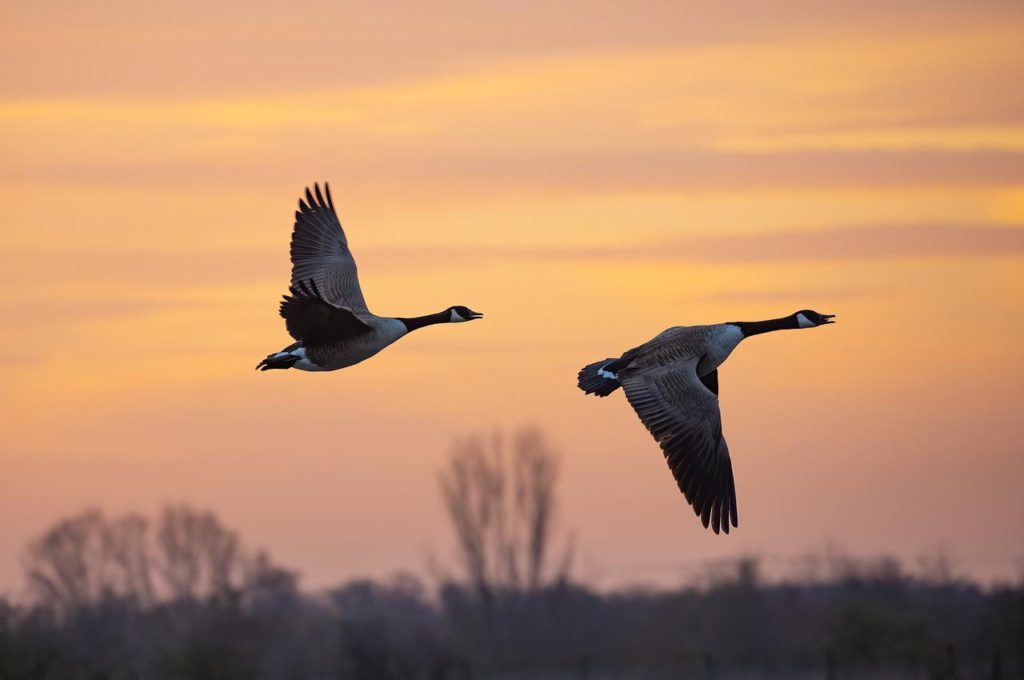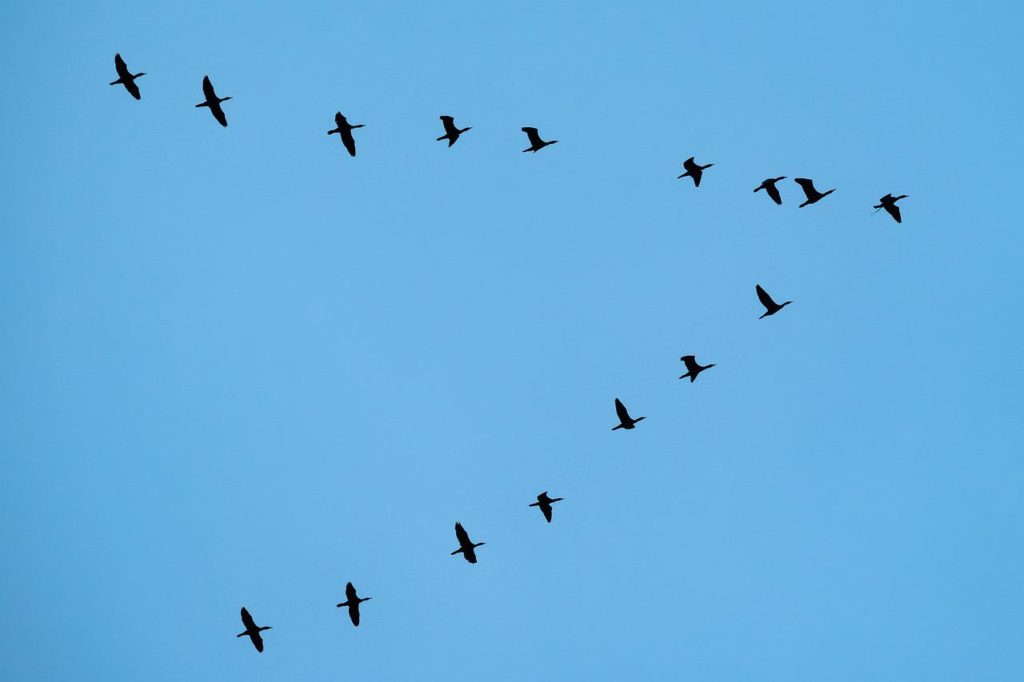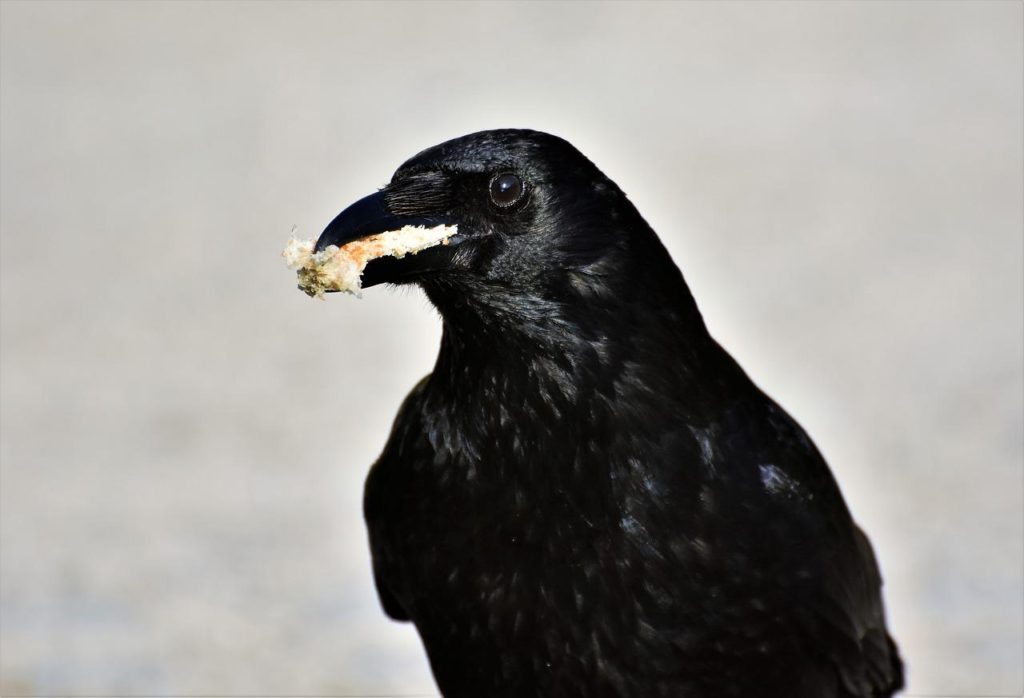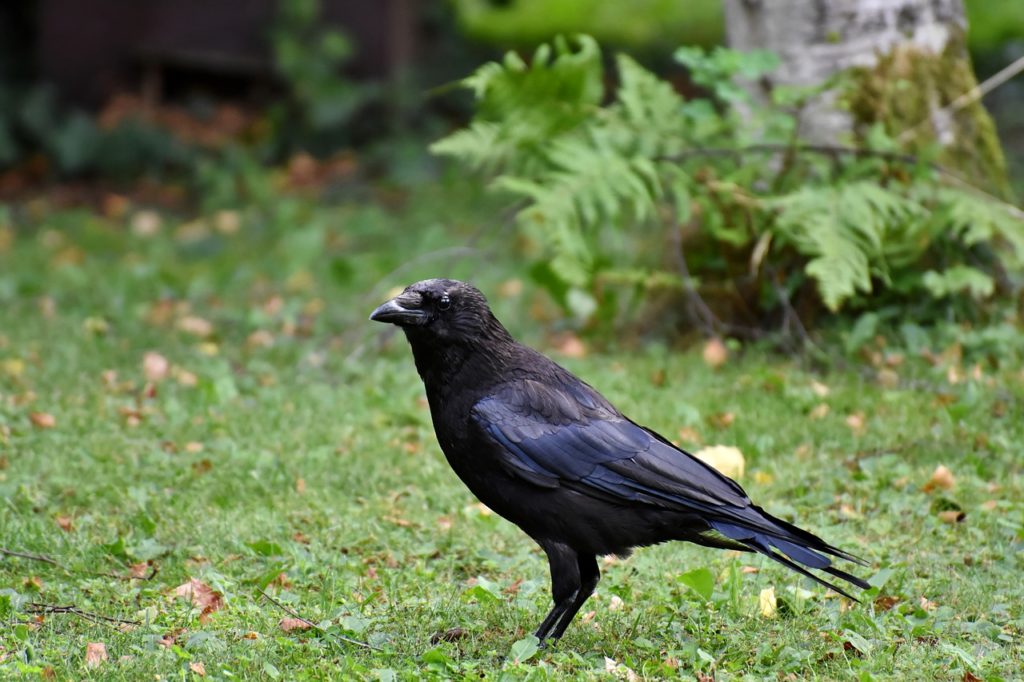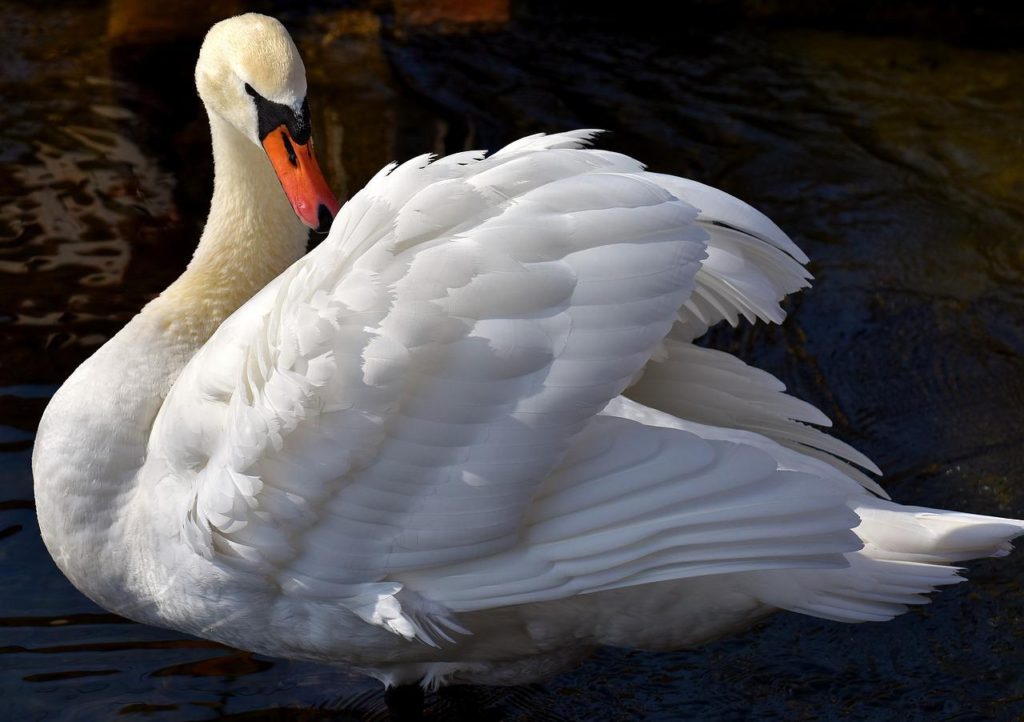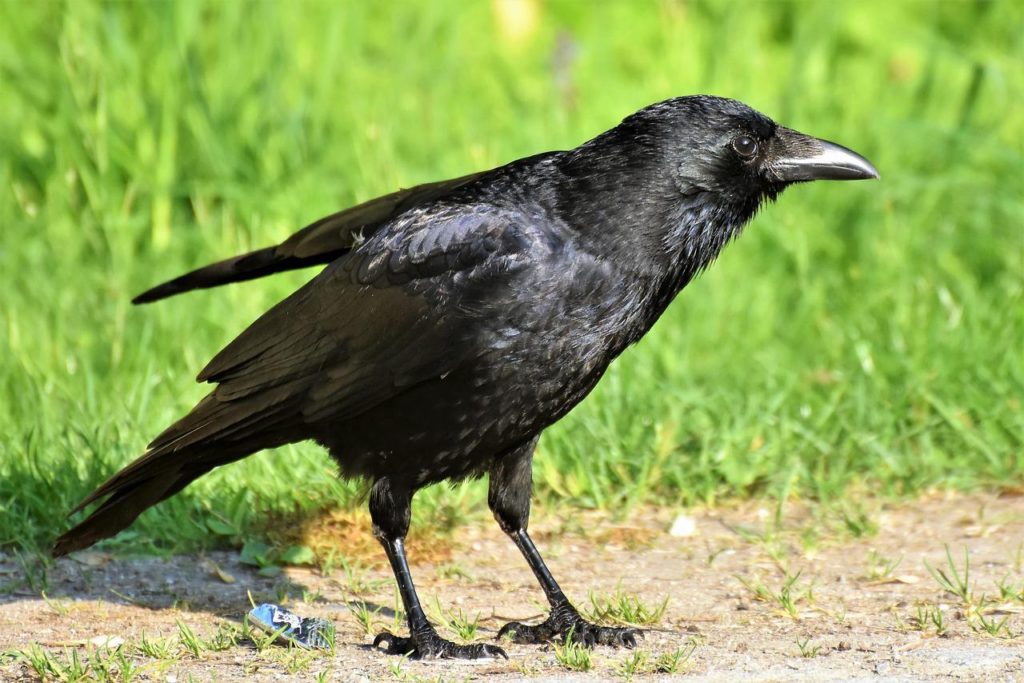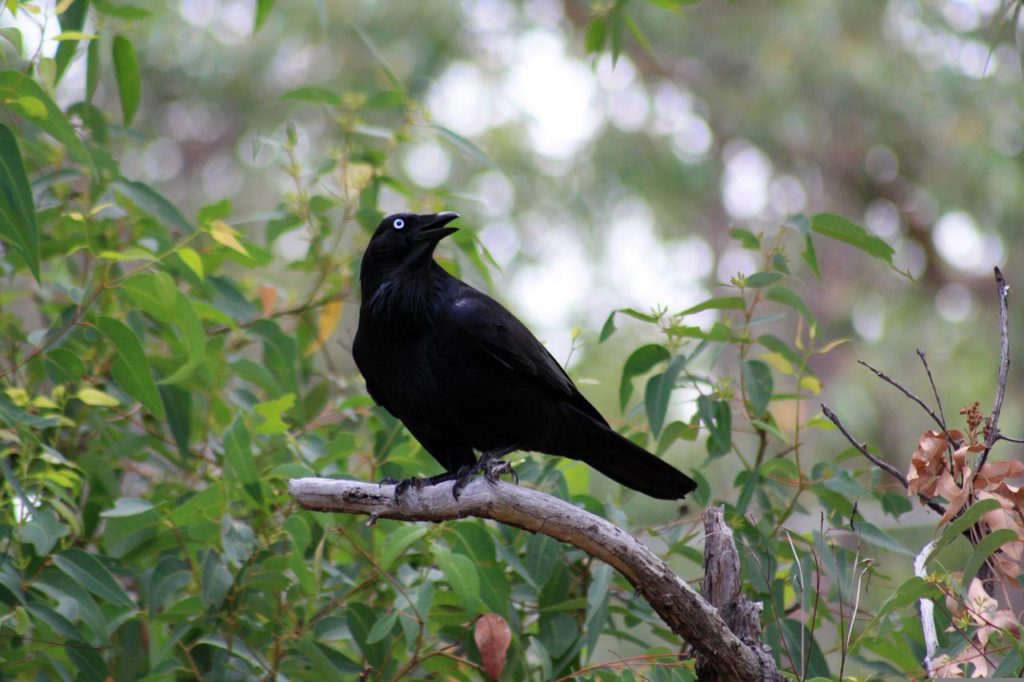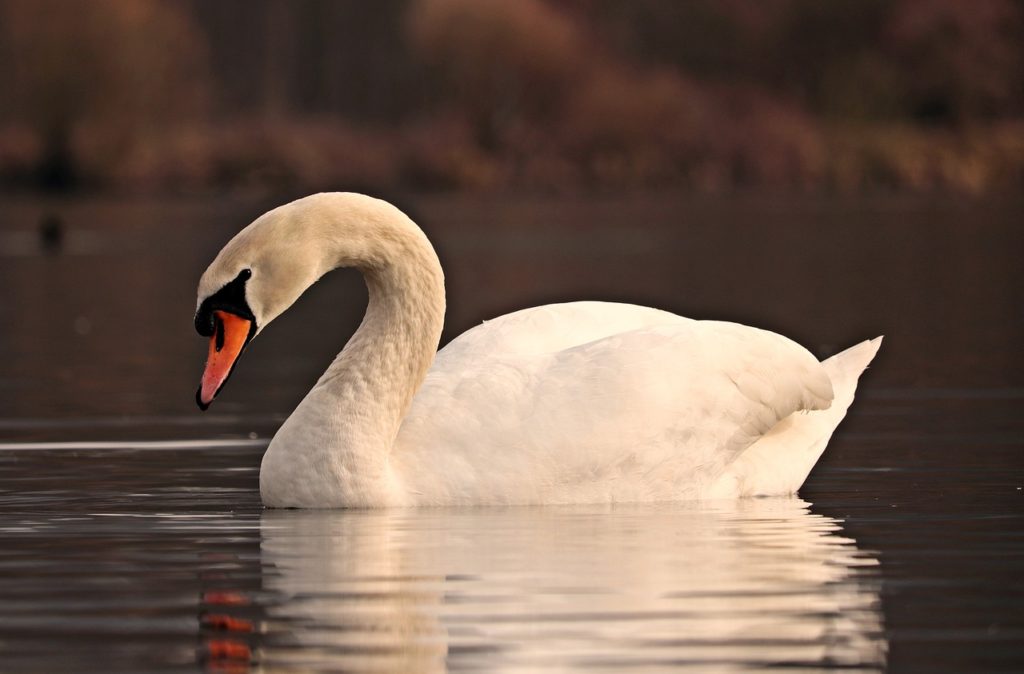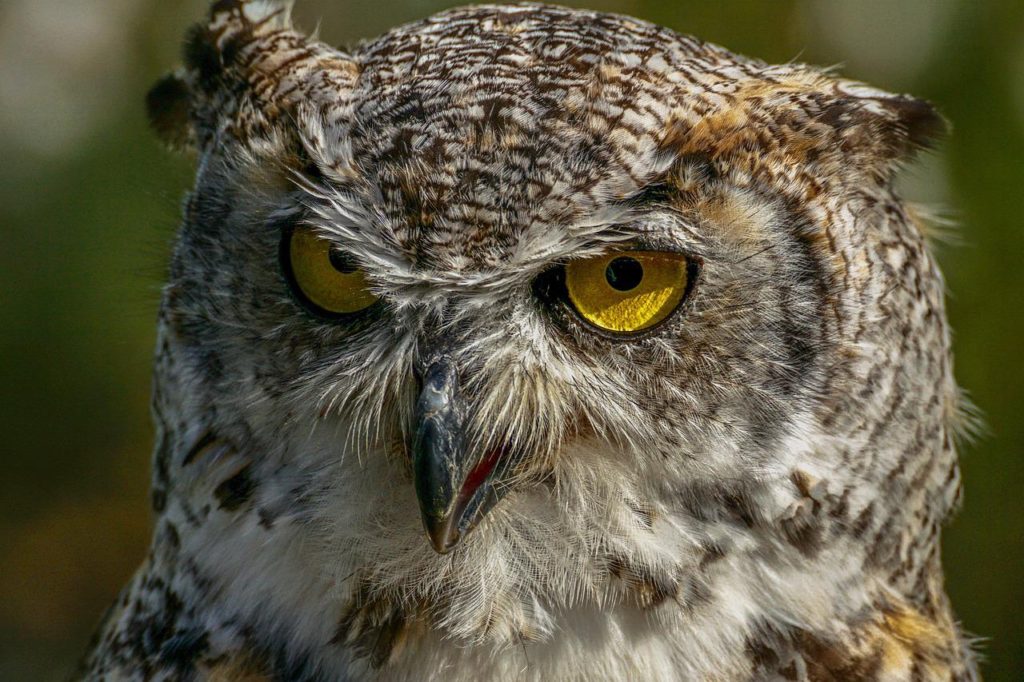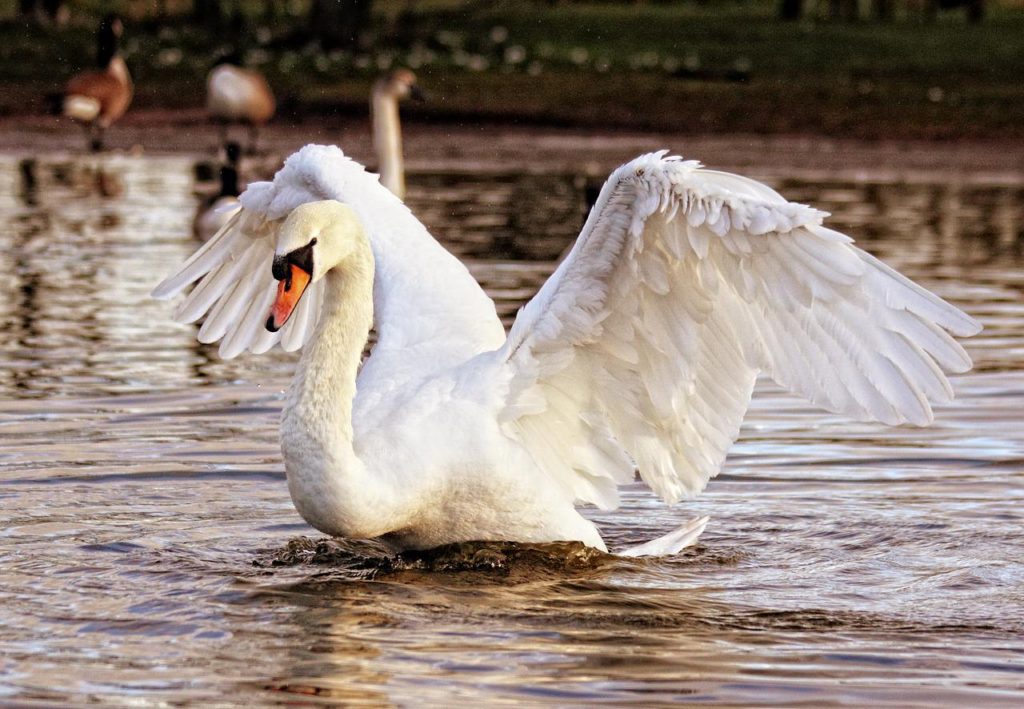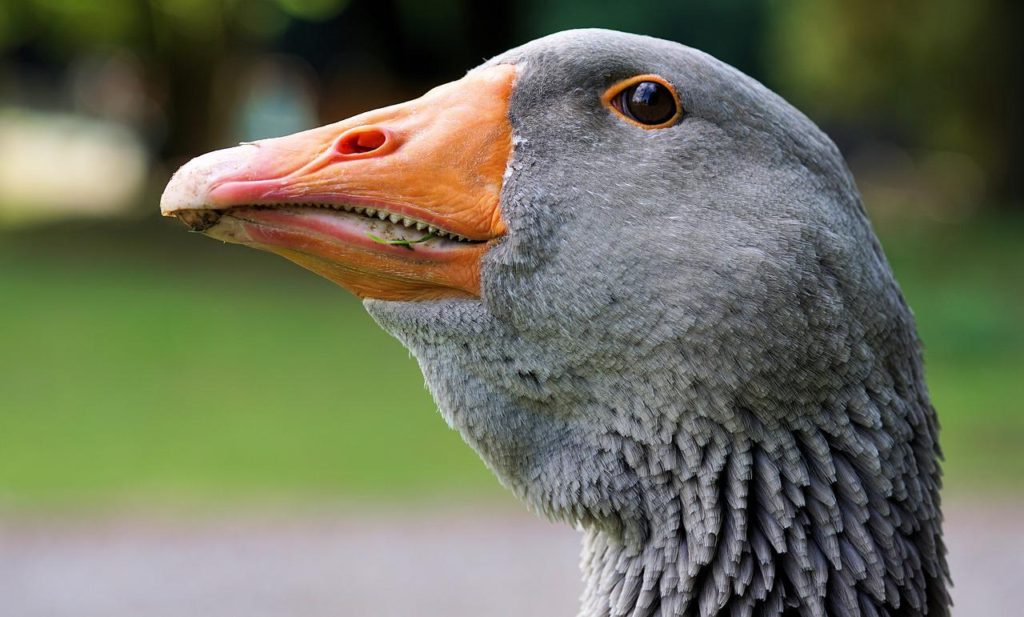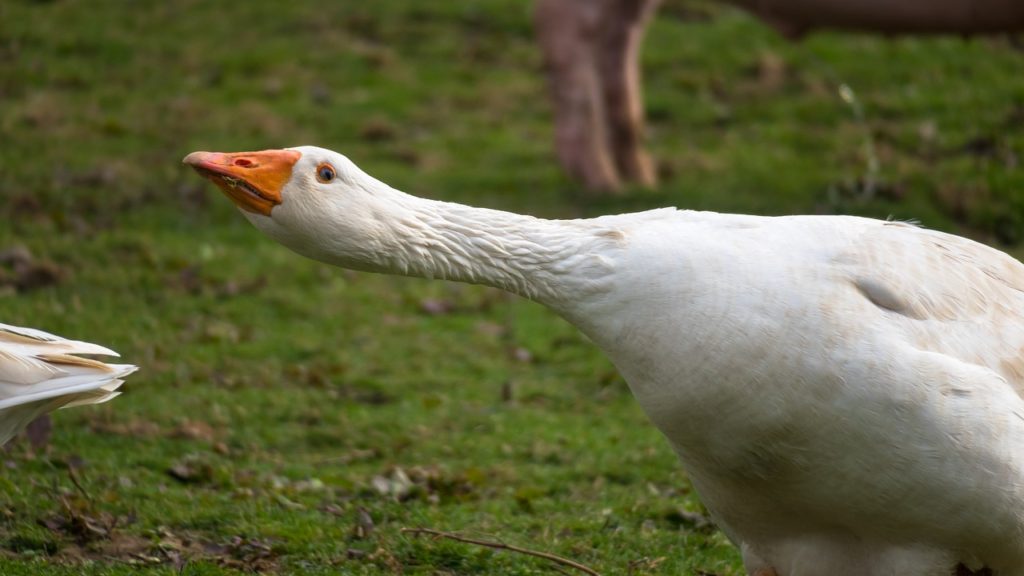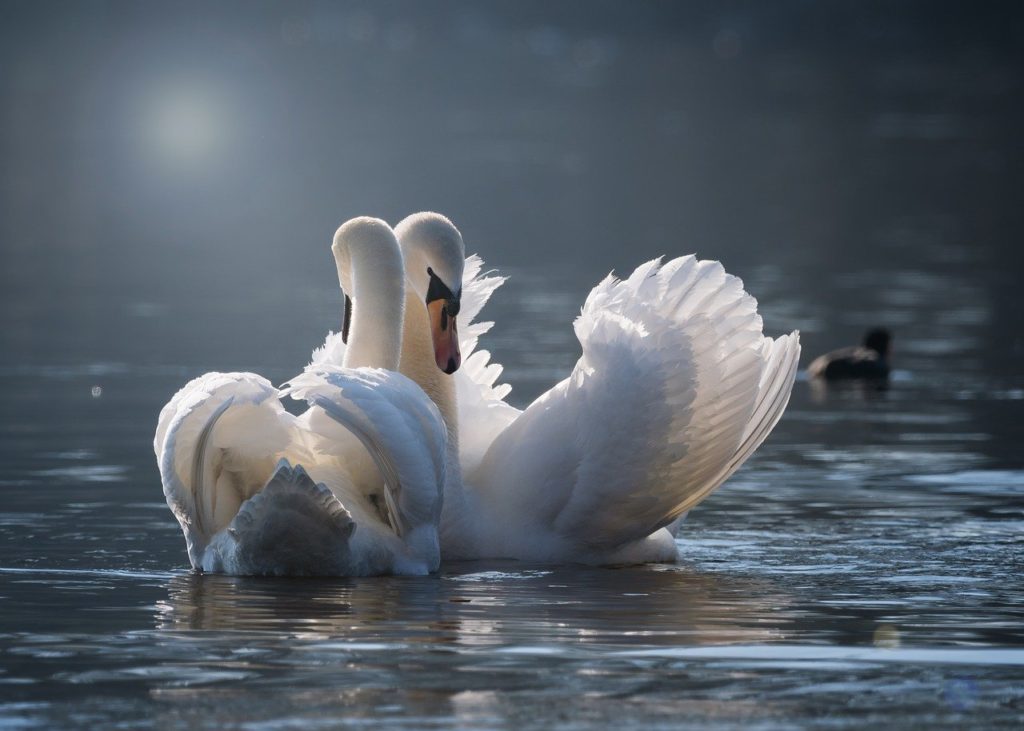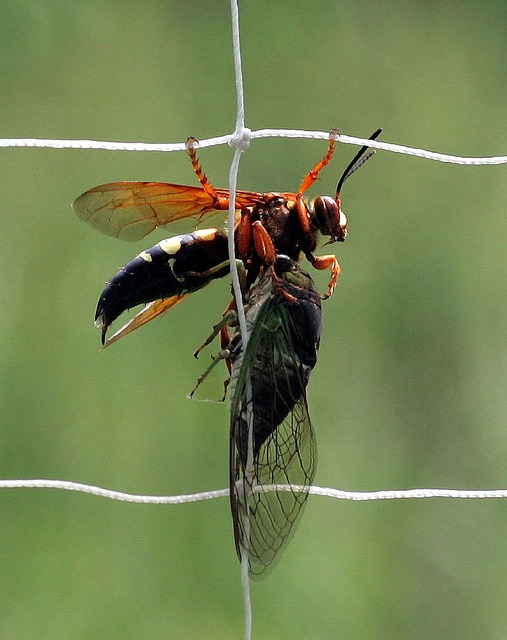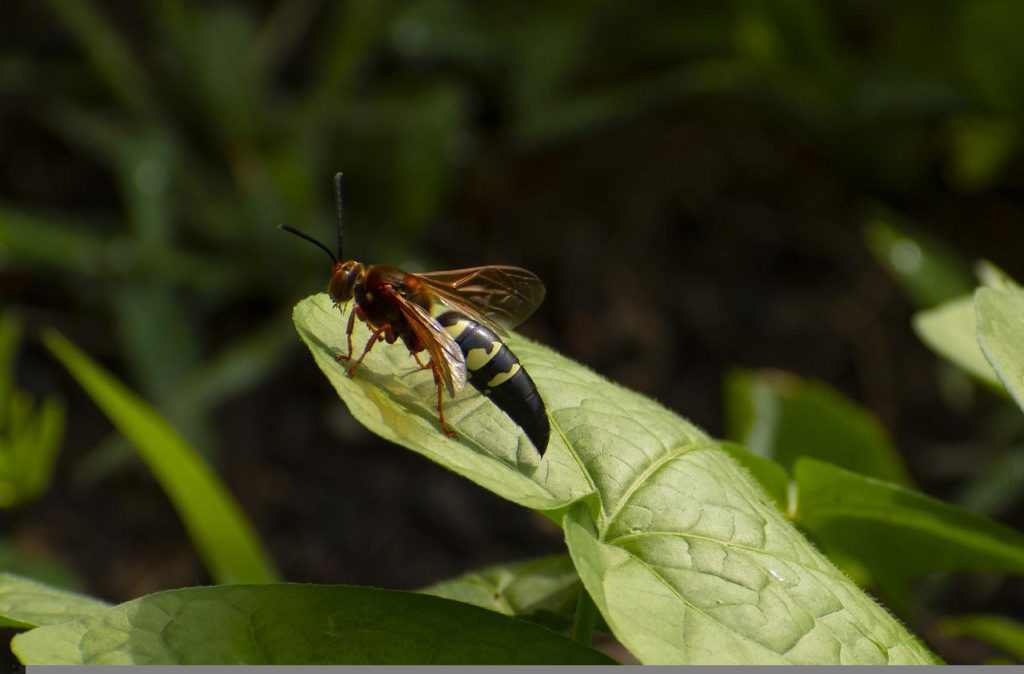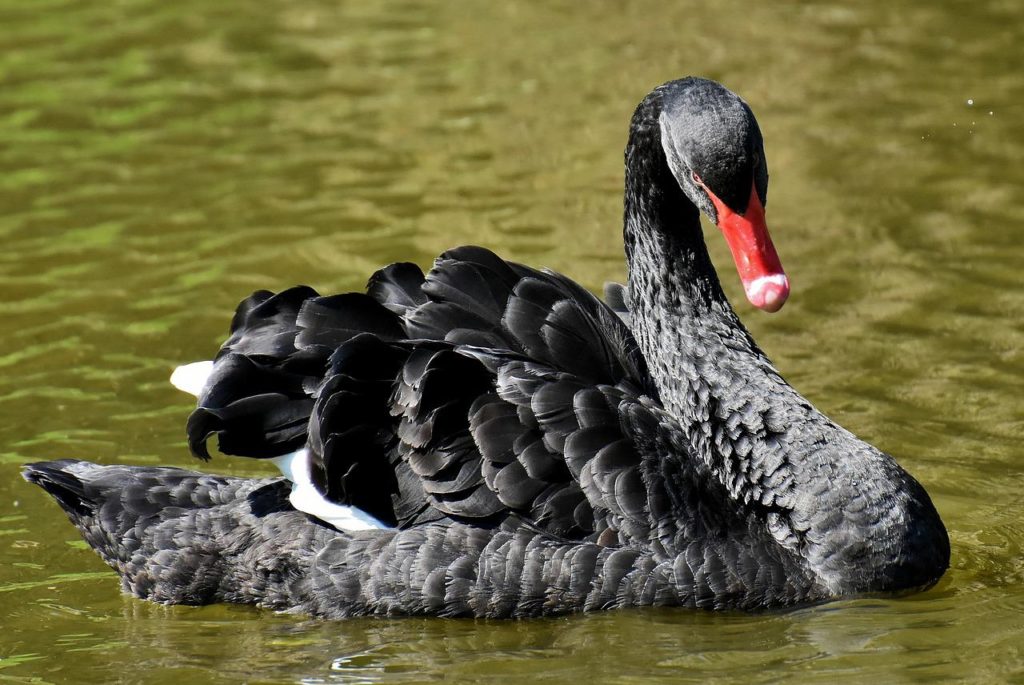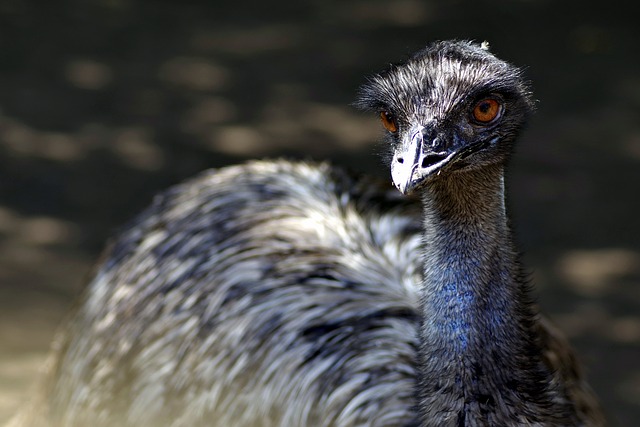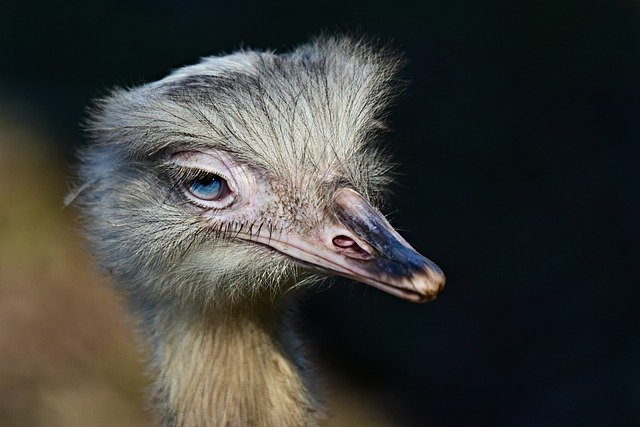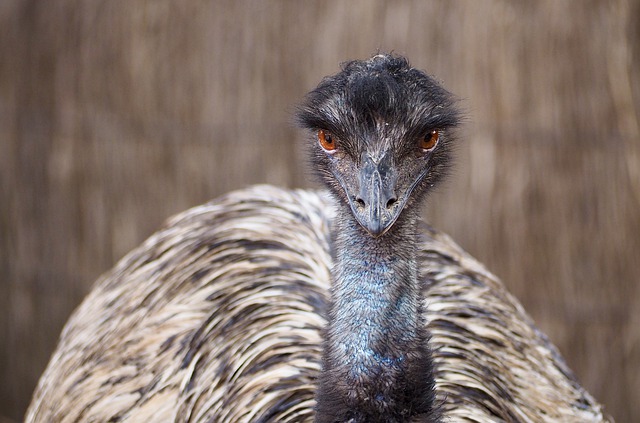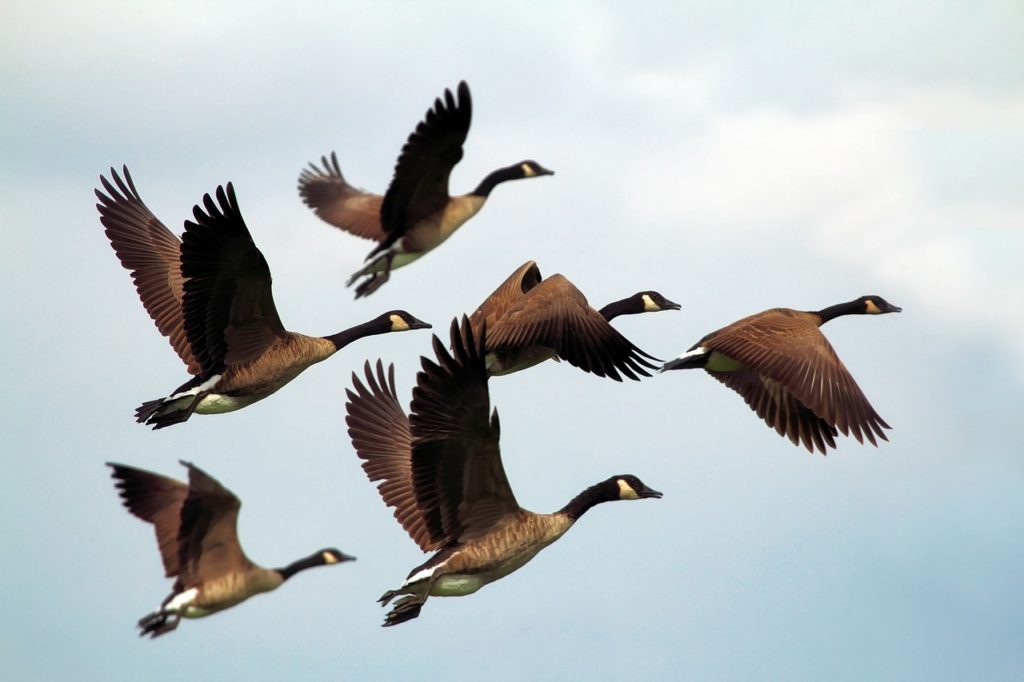
Although geese are clearly birds, there are many individuals who do not necessarily associate them with flying. So, do geese fly? The honest answer is that these waterfowl do. They do not exactly slouch in the flying department, either. Many people are pleasantly surprised to learn that geese are actually remarkably speedy flying birds. There are many things about their flying practices that are quite distinctive and noteworthy, too.
Why Do Geese Fly South?
Many bird species migrate, and geese are certainly no exception to this. There are some geese that fly north for migration purposes. There are others that do the total opposite of that. Geese that reside in northern locations tend to travel particularly far south. These geese skip over their counterparts from more southern parts.
People speculate that the northern birds do this out of the desire to steer clear of battling it out against southern geese for sustenance acquisition. They don’t want to have to deal with southern geese that have long-established strong wintering environments.
Do Geese Fly at Night?
It isn’t unusual at all to spot geese flying during the daytime. They fly during the night in times of migration as well. Migration flying can be quite taxing and stressful on geese. That’s why the birds sometimes fly at night. Night flights enable them to reduce the amount of energy they exert. The evening air is a lot less “hectic,” after all.
Why Do Geese Fly in Formation?
It’s no surprise that flying is an activity that’s tiring. Wing flapping can be fatiguing. Significant levels of flapping contribute to air current updrafts that surround the tips of birds’ wings. If a different goose flies in this zone, he or she can save precious energy.
Minimizing energy consumption gives geese the power to travel much longer. Flying in a V formation is all about practicality. Note, too, that formation flying can boost range considerably. “Independent” flying simply can’t hold a candle to it.
Why Do Geese Honk When They Fly?
Geese that fly in flocks tend to be noisy. They tend to honk a lot. The goal behind this is to motivate the geese that are right in front of them to maintain their speed levels. The honking also is an attempt to stop the flock from separating.
How Fast Do Geese Fly?
Geese are substantial and weighty birds. They have the ability to fly rapidly as well. They can surpass 30 miles per hour with the assistance of their strong wing beats. Geese don’t fly as vultures or eagles do. Vultures and eagles soar. Geese can in many cases fly 1,500 miles throughout the course of a single day.
How High Do Geese Fly?
Geese fly at altitudes that exceed 15,000 feet on a routine basis. There are even species that have been spotted flying as high as 23,000 feet. Geese that travel over the Himalayas in Asia tend to fly especially high in the air.
Why Do Geese Fly So High?
Some people scratch their heads asking themselves why geese often fly so high. High altitudes enable geese to stay far away from predators that may endanger them.
Beyond that, high flying gives geese the chance to take full advantage of meteorological “bonuses” such as mountain updrafts and jet streams. This type of flying can even minimize drag and therefore minimize energy levels that are essential for flight purposes.
How Long Do Geese Fly Without Stopping?
Geese are birds that have a lot of endurance. The creatures can fly from 100 to 200 miles in total without pausing at all. That’s precisely how they can remain in flight mode for numerous hours at a time. Once they pinpoint enticing locales, they rest, consume food, and then continue with their flying journeys.
What Month Do Geese Fly North?
Geese tend to travel to northerly locations during the spring season in the Northern Hemisphere. They do so for migration purposes in April and May. They sometimes even do so at the beginning of June. If you happen to gaze at the blue sky at the end of May or so, you may observe geese flying in their unmistakable and rather conspicuous V formations.
Start Shopping for Birding Supplies!
What Do Crows Eat?
With roughly 40 different species, crows are a common sight in most places around the world. And while most of us are familiar with their appearance and harsh vocalizations, their diet is not as obvious. So what do crows eat? Here's what you'll want to know. What Do...
What Are Crows Good For?
Crows are widely considered to be pests. However, these large and highly intelligent black birds actually serve quite a few important functions in the environment. So what are crows good for? Here's what you'll want to know. Pest And Parasite Management Crows are...
How Long Do Swans Live?
Swans are graceful and beautiful creatures and as such, people have many questions about them. They want to know about their mating rituals, their diet, their preferred habitats, and even their lifespans. How long do swans live for anyway? Swan lifespans actually vary...
Are Crows Good Pets?
People all around the world see and hear crows on a daily basis. Although these intelligent and dark birds are practically ubiquitous, most people don't think of them as being household pets. Are crows good pets? The general consensus is that crows do not make...
Are There Crows In Australia?
Crows are remarkably smart birds that also happen to be extremely adaptable. They navigate unfamiliar circumstances via observation and interaction. Crows reside in locations all over the globe. While they do not live in certain parts of South America, they do reside...
What Do Swans Eat?
Swans are famously long-necked birds that are symbols of romance, love, beauty, and purity. Since these waterbirds have so many admirers, people often wonder about their eating habits, behaviors, and more. What do swans eat, anyway? Swan Basics Swans typically live in...
Birds That Look Like Owls
Owls are typically solitary and mainly nocturnal birds. And although these well-known hooting creatures have a rather distinctive physical appearance, there are actually various other kinds of birds that resemble owls closely. And people sometimes mix them up. So...
Why Are Swans Protected?
Swans are graceful and gorgeous creatures. They also happen to have protection in the United Kingdom, interestingly enough. Why are swans protected there, anyway? And does the Queen own all the swans? Yes, she actually owns any mute swans that are unclaimed in both...
Birds With Teeth
Birds do not have teeth. However, there are quite a few that really look like they do! These birds have evolved special beaks which help them to perform important functions. So here are some of the most amazing birds with “teeth,” and what you’ll want to know about...
Are Geese Dangerous?
Geese, in brief, are waterbirds that are quite substantial in size. Since they're often spotted on golf courses, at schools, and in community parks, people understandably tend to wonder whether they're safety threats. Are geese dangerous? Why Geese Attack...
Do Swans Mate For Life?
Swans are famously elegant waterbirds that are known for their sizable bodies, webbed feet, and lengthy necks. People often associate them with romantic imagery and monogamy. Do swans mate for life? You can find the response to that common and rather fascinating...
When Do Cicada Killers Come Out?
Whether you dread them each year or are waiting for them to emerge and control the cicada population you may be wondering, “When do cicada killers come out? The answer is they come out each summer in late June or July. Here’s what you’ll want to know. Cicada Killer...
Are Cicada Killers Dangerous?
One look at one of these huge wasps buzzing around, your yard, and it’s only natural to ask, “Are cicada killers dangerous?” Fortunately, these wasps are mild-mannered. But here’s what you’ll want to know. Cicada Killer Wasps Basics Cicada killers emerge from the...
What Are Black Swans?
What are black swans? Black swans (Cygnus atratus) are sizable waterbirds. This species primarily appears in Australia's southwestern and southeastern portions. The black swan is nomadic in its homeland. This bird, true to its name, is mostly black. Although the bird...
What Do Cicada Killers Eat When There Are No Cicadas?
What do cicada killers eat when there are no cicadas? Well, while cicada killer wasps do hunt cicadas, the adults don’t actually eat them or kill them, their young do. Read on to learn more! The Cicada Killer Diet While you may have seen cicada killer wasps flying...
Do Cicada Killer Wasps Sting?
As one of the biggest species of wasp in North America the cicada killer wasp can be intimidating. And because of their size, appearance, and scary-sounding name, many people wonder, “Do cicada killer wasps sting? The answer is yes and no, and here’s what you’ll want...
Emu Facts
Did you know? One emu egg can make an omelet that can feed up to six adults. Did you know that the emu is the only bird with calf muscles? Can an emu walk backward? Let us find out by exploring some of the most jaw-dropping emu facts. Emus Have Amazingly Powerful Legs...
Rhea Facts
Doting dads, did you know the male rhea builds the nest, incubates the eggs, and takes care of the young? The rheas are paragons of parental care. It’s a bird like no other, and you will be surprised by the following rhea facts. Rheas Are One Of The Best Dads In The...
Alligator Snapping Turtle Facts
Flightless Australian Birds
There are over sixty species of flightless birds in the world. These birds have lost their capability to fly through evolution, and several of them live in the “land Down Under.” So here’s a list of all the flightless Australian birds. Emu The emu is a large...
